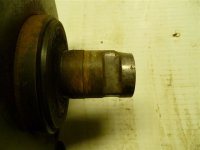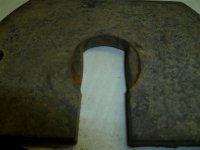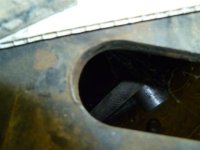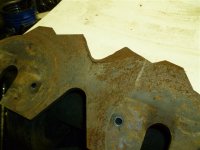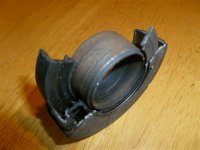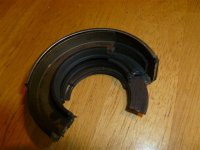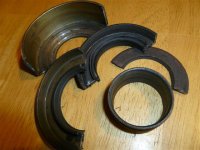Bison, hope you see this. I did some checking and found some information in ASV annual reports that provides the history of their product line. Here is some of that history from their 2002 report:
MD70, production start 1991 - First rubber tracked crawler/tractor by ASV. Low ground pressure, bi-directional drive and loader capabilities
HD4500, production start 1997 - Larger than MD-70. Maintenance-free suspension. Currently manufactured in limited quantities for select markets
DX4530, production start 1997 - Largest Posi-Track. Used primarily in over-the-snow application
2800, production start 1998 - Size, weight and operating capabilities of the MD-70 plus maintenance-free undercarriage
4810, production start 1999 - Caterpillar engine and other Caterpillar components (replacement to HD 4500 series)
So the 4810 should be a later improved model. My guess is that is why you have different seals, they started using CAT metal face seals at one point, probably on the 4810. Mine has something else but I don't know what until I get them apart. I see in several annual reports that they continued to build the MD70, 4500 and 4810 into at least 2004 time frame at which time they planned on phasing out the 4500 and 4810 while keeping the MD70 in limited production. I don't think it ever happened that way however. I read that the MD70 had grease fittings on all the axles to grease the bearings and the 4500 was the first machine to have a "maintenance free" undercarriage with bearings bathed in oil. I wonder if they should have left well enough alone. Although I will say that in my career as an engineer working military vehicles we always used oil bathed bearings with CAT type seals. That's what the M1 tank and others have and they work pretty well. However the M1 has clear plastic bearing covers on the end of the axle so you can easliy tell if they are low on oil. I'll use this thread to post my progress on working my undercarriage and let you know how your ideas work on my machine.
MD70, production start 1991 - First rubber tracked crawler/tractor by ASV. Low ground pressure, bi-directional drive and loader capabilities
HD4500, production start 1997 - Larger than MD-70. Maintenance-free suspension. Currently manufactured in limited quantities for select markets
DX4530, production start 1997 - Largest Posi-Track. Used primarily in over-the-snow application
2800, production start 1998 - Size, weight and operating capabilities of the MD-70 plus maintenance-free undercarriage
4810, production start 1999 - Caterpillar engine and other Caterpillar components (replacement to HD 4500 series)
So the 4810 should be a later improved model. My guess is that is why you have different seals, they started using CAT metal face seals at one point, probably on the 4810. Mine has something else but I don't know what until I get them apart. I see in several annual reports that they continued to build the MD70, 4500 and 4810 into at least 2004 time frame at which time they planned on phasing out the 4500 and 4810 while keeping the MD70 in limited production. I don't think it ever happened that way however. I read that the MD70 had grease fittings on all the axles to grease the bearings and the 4500 was the first machine to have a "maintenance free" undercarriage with bearings bathed in oil. I wonder if they should have left well enough alone. Although I will say that in my career as an engineer working military vehicles we always used oil bathed bearings with CAT type seals. That's what the M1 tank and others have and they work pretty well. However the M1 has clear plastic bearing covers on the end of the axle so you can easliy tell if they are low on oil. I'll use this thread to post my progress on working my undercarriage and let you know how your ideas work on my machine.
